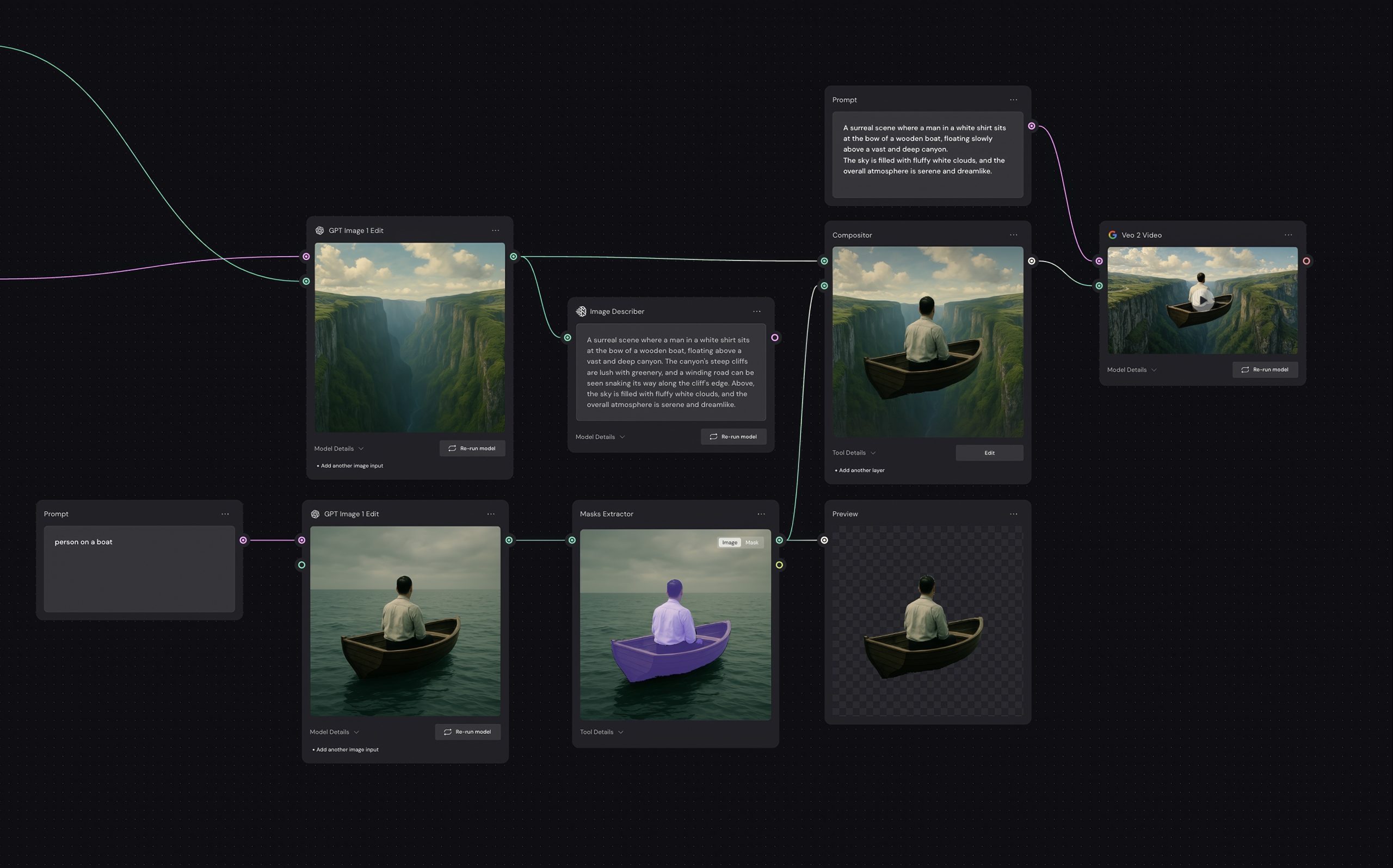
Figma, the leading collaborative design platform, has announced its acquisition of Weavy, an innovative company specializing in AI-powered image and video generation. This strategic move is poised to significantly enhance Figma’s capabilities, allowing designers to seamlessly integrate advanced media creation directly into their existing workflows. The Tel Aviv-based startup, Weavy, will operate under a new umbrella brand, Figma Weave, signaling a deeper commitment to embedding generative artificial intelligence across Figma’s robust ecosystem.
Twenty individuals from Weavy’s team are set to join Figma, bringing their specialized expertise in artificial intelligence and creative tools to the larger organization. While the financial details of the acquisition remain undisclosed, Weavy, founded in 2024, had previously secured $4 million in a seed funding round in June. This round saw participation from notable investors including Entrée Capital, Designer Fund, Founder Collective, and Fiverr founder Micha Kaufman, underscoring the early recognition of Weavy’s potential in the rapidly evolving AI landscape.
The Strategic Imperative: Integrating Generative AI into Design
The acquisition of Weavy by Figma represents a critical inflection point in the evolution of digital design tools. For years, Figma has been celebrated for its cloud-native, collaborative environment that revolutionized how teams create user interfaces and experiences. Its ascent challenged established giants like Adobe, culminating in an attempted $20 billion acquisition by Adobe that was ultimately terminated due to regulatory concerns. This past event underscored Figma’s independent trajectory and its determination to innovate autonomously. By bringing Weavy into its fold, Figma is not merely adding a feature; it is strategically positioning itself at the forefront of the generative AI revolution within the creative industry.
The design world has seen an exponential rise in the demand for AI-powered capabilities, particularly in automating mundane tasks, accelerating ideation, and generating high-quality visual assets. From basic image manipulation to complex video synthesis, artificial intelligence is transforming every facet of the creative process. Designers are increasingly seeking tools that can not only assist them but also empower them to explore new creative avenues with unprecedented speed and efficiency. Figma’s move is a direct response to this growing market need, aiming to provide a unified platform where design and AI-driven content generation coalesce.
Weavy’s Technological Edge: A Node-Based Approach to Creative Control
At the heart of Weavy’s appeal is its sophisticated web-based platform that offers a unique, node-based approach to AI media generation. Unlike many generative AI tools that provide a black-box experience, Weavy empowers users with granular control over their creations. This methodology allows designers to combine various artificial intelligence models, essentially creating custom pipelines for image and video generation. This flexibility is crucial for professional designers who require precise control over outputs for product mock-ups, brand styling, marketing collateral, and conceptual art.
Weavy’s interface enables users to begin with a textual prompt on an infinite canvas, leveraging different AI models to generate initial visual concepts. The power lies in the ability to review results from multiple models simultaneously, select the most promising options, and then refine them through iterative prompting and advanced editing tools. For instance, a designer might generate an initial image using one model, then apply a video generation prompt using another, and further tweak the video’s aesthetics.
The platform’s professional editing capabilities are a significant differentiator. Users can perform layer edits, adjust lighting, modify colors, and alter camera angles, all through intuitive prompts. This level of interaction ensures that the AI-generated media aligns perfectly with the designer’s vision, allowing for creative exploration combined with meticulous craftsmanship. Figma CEO Dylan Field highlighted this aspect, noting Weavy’s "node-based approach brings a new level of craft and control to AI generation. Outputs can be branched, remixed, and refined, combining creative exploration with iteration and craft." He also praised the Weavy team for striking a balance between "simplicity, approachability, and power," making the tool "just a joy to use."
Weavy supports a diverse array of specialized AI models, catering to different creative needs. For video generation, it integrates models such as Seedance, Sora, and Veo, which are known for their capabilities in creating dynamic and lifelike motion graphics. For static image generation, the platform leverages Flux, Ideogram, Nano Banana, and Seedream, each offering distinct artistic styles and technical strengths. This multi-model strategy ensures that designers have access to a broad palette of generative possibilities, allowing them to choose the best AI engine for their specific project requirements.
Integration Roadmap and Future Impact
Initially, Weavy will continue to exist as a standalone product, likely allowing its technology and user experience to be refined and optimized independently. This phased approach often allows for smoother integration and ensures that core functionalities remain stable. In the future, the plan is to fully integrate Weavy’s capabilities into the Figma Weave brand and, more broadly, into the entire Figma platform.
This integration promises a transformative experience for Figma users. Imagine a scenario where a designer prototypes a new user interface in Figma, and with a few prompts, instantly generates high-fidelity product mock-ups featuring diverse scenarios, or creates dynamic promotional videos directly within the design file. This seamless workflow could drastically reduce the time spent switching between different applications and eliminate bottlenecks in the creative process. It positions Figma as an end-to-end solution, not just for design, but for content creation and presentation as well.
The long-term vision likely involves more than just visual asset generation. Figma could explore integrating AI to assist with component creation, style guide enforcement, accessibility checks, and even generating entire user interface elements based on textual descriptions. The collaborative nature of Figma, combined with Weavy’s generative AI, could unlock new paradigms for team-based creative work, allowing designers, marketers, and developers to iterate on visual concepts with unprecedented speed and synergy.
A Broader Market Trend: The AI Arms Race in Creative Software
Figma’s acquisition of Weavy is not an isolated event but rather a significant move within a broader trend of consolidation and innovation in the AI-powered design space. The market for AI-driven creative tools is intensely competitive, with technology giants and nimble startups vying for dominance. Companies are racing to incorporate generative AI capabilities to stay relevant and attract a new generation of designers.
Earlier this month, AI search platform Perplexity acquired the team behind Visual Electric, another Sequoia-backed AI design startup, signaling the value placed on specialized AI talent and technology. Similarly, in April, Krea, an AI startup focused on creative generation, announced it had raised a substantial $83 million across various funding rounds from prominent firms like Bain Capital, a16z, and Abstract Ventures, achieving a valuation of $500 million. These investments and acquisitions highlight the massive potential and investor confidence in companies that can effectively merge artificial intelligence with creative workflows.
The competitive landscape includes established players like Adobe, which has been aggressively integrating AI into its Creative Cloud suite through features like Generative Fill in Photoshop and Firefly across its ecosystem. Canva, known for its accessible design tools, is also heavily investing in AI to simplify content creation for its vast user base. Figma’s acquisition of Weavy ensures it remains a formidable player, offering advanced AI capabilities that could rival or even surpass those of its competitors, particularly for professional designers who demand a high degree of control and flexibility.
Societal and Cultural Implications of AI in Design
The widespread adoption of AI in design tools like Figma Weave carries significant societal and cultural implications. On one hand, it democratizes design, enabling individuals with limited technical skills to produce high-quality visual content. This could empower small businesses, content creators, and non-profits to create compelling visuals without extensive budgets or specialized training.
On the other hand, the rise of generative AI raises critical questions about the future of creative professions. While AI can automate repetitive tasks and accelerate ideation, it also shifts the designer’s role from execution to curation, prompt engineering, and high-level strategic direction. Designers will need to adapt, embracing AI as a powerful assistant rather than a replacement. Ethical considerations, such as the potential for AI-generated content to perpetuate biases present in training data or the complexities surrounding intellectual property rights for AI-assisted creations, will also continue to be important discussions within the industry.
Ultimately, Figma’s acquisition of Weavy represents a forward-looking step into a future where the lines between design, content creation, and artificial intelligence are increasingly blurred. By integrating advanced generative AI capabilities directly into its collaborative platform, Figma is not only enhancing its product offering but also shaping the very definition of what it means to be a designer in the digital age. The "Figma Weave" brand encapsulates this vision, promising a tightly integrated, powerful ecosystem where creativity and cutting-edge technology intertwine to unlock unprecedented possibilities.





